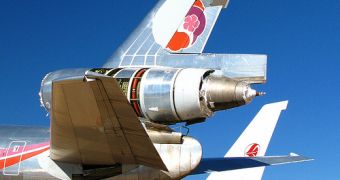Over the years, flying on a large scale has become a lot safer due to continuous improvements added to the aircraft itself, to the control terminal or to the airport terminal. Passengers could finally afford to fly to their destinations on a regular basis only after the introduction of some improvements to the flight patterns, which were never even thought of during, say, World War II.
Cabin pressurization is one of the most important aspects of today's airplanes. It allows them to fly faster and higher than previous models ever could, at the same time offering travelers a certain degree of comfort and protection from outside factors. In the past, all those inside a plane had to wear oxygen masks and heavy clothing, in order to cope with the extreme cold and lack of breathable air associated with high-altitude flights. Nowadays, there are even bathrooms and kitchens aboard airline planes, providing passengers with a certain degree of luxury.
With the development of the turbo-jet, commercial flights became daily reality, allowing for some 400 people to be transported at once to a designated location. With hundreds of paying passengers, airlines ordered more and more planes and finally set the base price for tickets at an affordable level for the masses. To further increase the range of a flight and to decrease fuel consumption, winglets, small vertical sheets of metal, were added at the tip of the wings, giving the plane more stability and safety, implicitly.
Radars came into existence out of the necessity to detect airplanes during the Second World War. Since then, they evolved considerably, only to become an indispensable part of modern traffic controlling processes. These devices help regulate the incoming and outgoing flights of all major airports in the world and have done so for quite some time now. Although the Global Positioning System (GPS) is scheduled to kick in and make radars obsolete, airline traffic controllers have expressed their satisfaction with the decision they've made based on the information relayed back by radars.
These are only a few of the aeronautic inventions over the past years that made a difference in the way flying is seen today. Other findings that benefited people include the jetway, which links terminals directly to the plane, deicing chemicals, which ensure that a flight can depart even when it's freezing outside, and control hubs, those very few extremely large airports that have up to 20 trans-continental flights each day. Someone could say we've come a long way since the 1950s.

 14 DAY TRIAL //
14 DAY TRIAL //